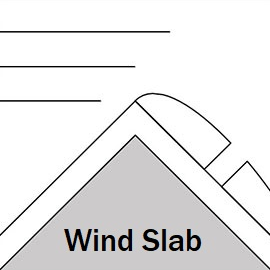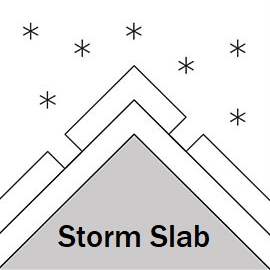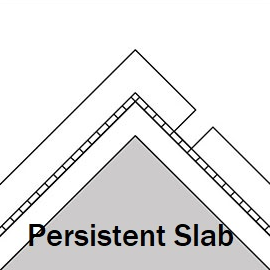Gudauri
Natural avalanches are possible, human-triggered avalanches are likely. Small avalanches in many areas, or large avalanches in specific areas, or very large avalanches in isolated areas.
Over 1 meter of new snow combined with moderate to strong winds during the recent storm means we are still at considerable avalanche hazard in the high alpine and alpine. Strong West winds continue to provide Wind Slab hazard on East aspects. Watch for glide slabs and cracks that formed on North-East, East and South-East aspects below 2500 m. Please note that we currently have limited observations, and there is some uncertainty around some parts of this forecast.
Forecast issued at: 27 December 2023 21:00
Forecast valid until: 28 December 2023 21:00
Forecaster: Luke Frisken
High Alpine
> 2600m
3 Considerable
Dangerous avalanche conditions. Careful snowpack evaluation, cautious route-finding and conservative decision-making essential.
Alpine
2000m - 2600m
3 Considerable
Dangerous avalanche conditions. Careful snowpack evaluation, cautious route-finding and conservative decision-making essential.
Sub Alpine
< 2000m
2 Moderate
Heightened avalanche conditions on specific terrain features. Evaluate snow and terrain carefully; identify features of concern.
Avalanche Problems
Wind Slab

Possibly variable distribution due to terrain, watch closely for the signs of wind slab on any aspect you are travelling on. With the strong winds that occurred, loading may be further down the slope than you might typically expect. Slab depths could be greater than 1 m with the loading from the recent storm. With the ongoing wind and light precipitation we may be getting new wind slabs building on top of the old ones which are not yet stable.
| Sensitivity | The specific avalanche problem type is reactive to human rider triggers. Easy to trigger with ski cut. |
| Distribution | Specific areas, with common characteristics. Evidence for instabilities exists, but it is not obvious and finding it requires careful observations. |
| Time of Day | All day |
| Trend | Improving |
| Confidence | Moderate |
Storm Slab

| Sensitivity | The specific avalanche problem type is difficult to trigger with a human rider. |
| Distribution | Many locations. Evidence for instabilities is frequently found, in many locations. |
| Time of Day | All day |
| Trend | Improving |
| Confidence | Moderate |
Persistent Slab

Thin layer of facets over or under a melt-freeze or sun crust. We haven't observed any avalanches on this layer since the storm, pending more investigation.
| Sensitivity | The specific avalanche problem type is difficult to trigger with a human rider. |
| Distribution | Specific areas, with common characteristics. Evidence for instabilities exists, but it is not obvious and finding it requires careful observations. |
| Time of Day | All day |
| Trend | No change |
| Confidence | Low |
Recent Avalanches and Snowpack
18th - 20th of December:
Snow pits on S, SE, N and NE aspects between Sadzele and Bidara at or above 3000 m indicate a "right side up" snowpack with density increasing with depth. Some facets were found close to the ground on N aspects. A very thin layer of facets was found overlying a crust which is now (as of 27th December) down below 1.5 m. Extended column tests yielded no results.
22nd - 26th of December:
We have received about 120cm of new snow during the storm, with wind loading predominantly from the W, but aso from the SW-S-SE aspects during some periods.
27th of December:
Glide slabs on grass were observed at 2400m on Chrdili S - SE aspects.
Weather
28th of December:
Around 5cm of new snow in the early morning, winds changing from moderate S to strong W. Temperatures ranging from -3C in the morning to -7C in the afternoon and -15C in the late evening. Overcast during the morning, mostly clear in the afternoon.
29th of December:
Moderate-light NW winds changing to light S winds in the afternoon. Temperatures ranging from -17C in the early morning to -3C in the afteroon. Clear during the early morning and evening. During the day, partly cloudy, high cloud.
Disclaimer
Our avalanche forecasters are internationally qualified and experienced professionals, and data is provided by skilled observers. We encourage you to make your own observations and decisions, without relying solely on our forecast, since any forecast is a generalised 'best guess', and in certain cases it might be inaccurate. We can not be held liable for any actions you take in the backcountry that may result in injury, loss or death.